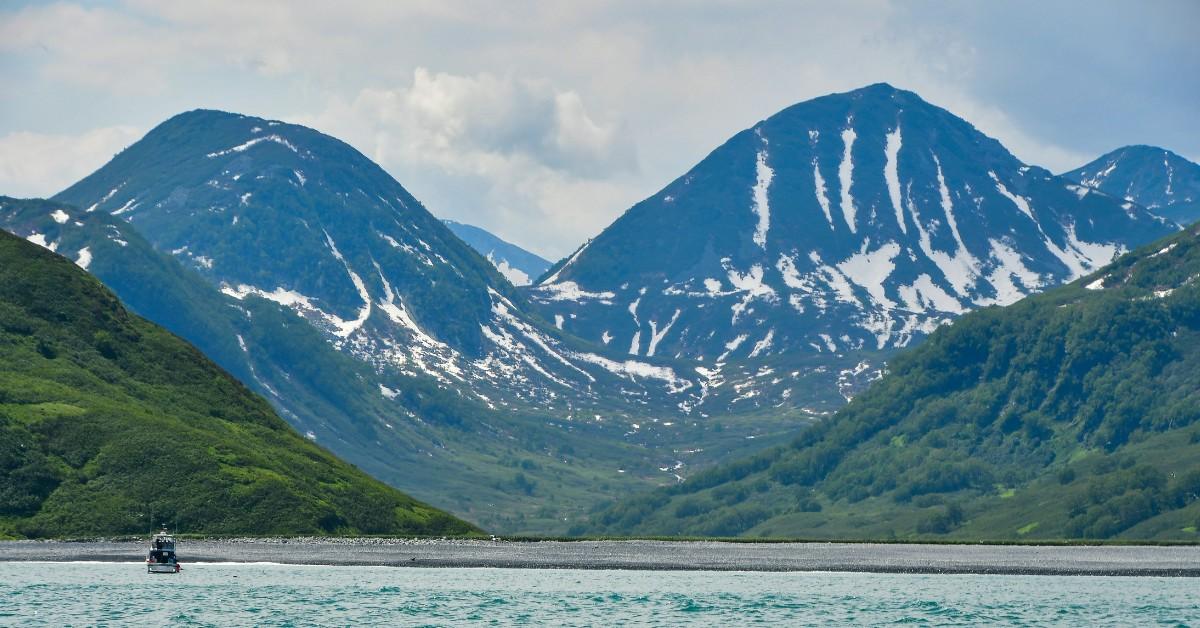Russia’s Klyuchevskoy Volcano Erupts Following Massive Earthquake, Ash Expected
The volcano last erupted in 2023.
Published July 30 2025, 2:37 p.m. ET

Russia was delt a one-two punch at the end of July, when a massive earthquake struck the Kamchatka peninsula, followed quickly by an eruption of the regions Klyuchevskoy volcano.
The volcano's eruption was described as a powerful one by experts in the area, and lava was seen traveling down the side of one of the volcano's slopes.
While the volcano sits nearly 280 miles away from the region's capital, ash from the eruption is expected to travel far and wide, and the Tokyo Volcanic Ash Advisory Center (VAAC) has issued an alert.
Here's everything we know about the volcano eruption in Russia.

The Klyuchevskoy volcano erupted in Russia in 2025.
On July 30, 2025, the volcano erupted just as experts had been predicting it would. According to Newsweek, scientists charged with observing the volcano had noted that the crater had been filling with lava in the weeks before the eruption. They also noted that there had been a series of ash plumes coming from the top of the volcano, signaling that an eruption could be eminent.
Then on July 30, the volcano shot a stream of ash up into the air that went as high as 1.9 miles. Later, some observers from the Russian Academy of Sciences reported seeing streams of lava traveling down the volcano's slopes on the western side of the mountain as well as explosions coming from the area.
While eruptions here aren't exactly rare — the volcano last erupted in 2023 — it is noteworthy thanks to the volcano's size. According to Wikipedia, it sits within the highest mountain located in Siberia, and it also holds the record for being the highest active volcano located in all of Eurasia.
Did the earthquake in Russia cause the volcano to erupt?
Just hours before the Klyuchevskoy volcano started to stir, the region was rocked by an 8.8 magnitude earthquake. Some are speculating that the earthquake triggered the volcano, but as the Klyuchevskoy volcano is quite active — Phys.org notes that there have been 18 eruptions since 2000 — so it's likely that conditions at the site of the volcano were already right for an eruption prior to the earthquake.
Still, the timing of the 8.8 magnitude quake does make people wonder. Especially when you consider how far and wide the effects of the earthquake were felt far and wide. Tsunami warnings and watches were put into effect in multiple areas, including Russia, Alaska, Hawaii, and Japan.
Some areas were hit hard by the waves, especially in areas like Russia's coast, where they crested at 50 feet in height, according to PBS News.
Additionally, some weather stations reported seeing the earthquake register on local seismometers around the country, including places like Pennsylvania. While people in the region couldn't feel the shaking themselves, the sensitive machines tasked with tracking these developments were able to pick up the movement.
Russia can expect to experience aftershocks in the days following the earthquake, with some expected to clock in at as strong as a 6 in magnitude.
While there were no immediate casualties reported in the area, there were multiple injuries. Many of them seem to have happened as people were trying to exit nearby buildings during the earthquake.
Hopefully, there are no additional injuries reported as a result of all of the activity going on in and around the region.